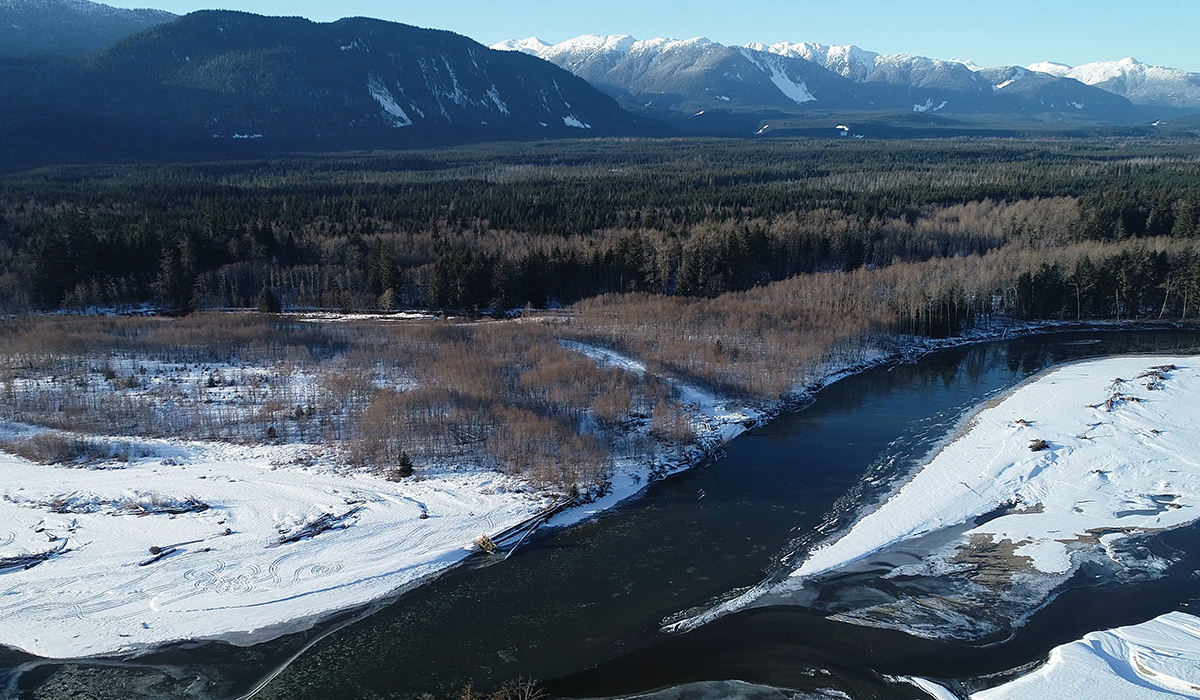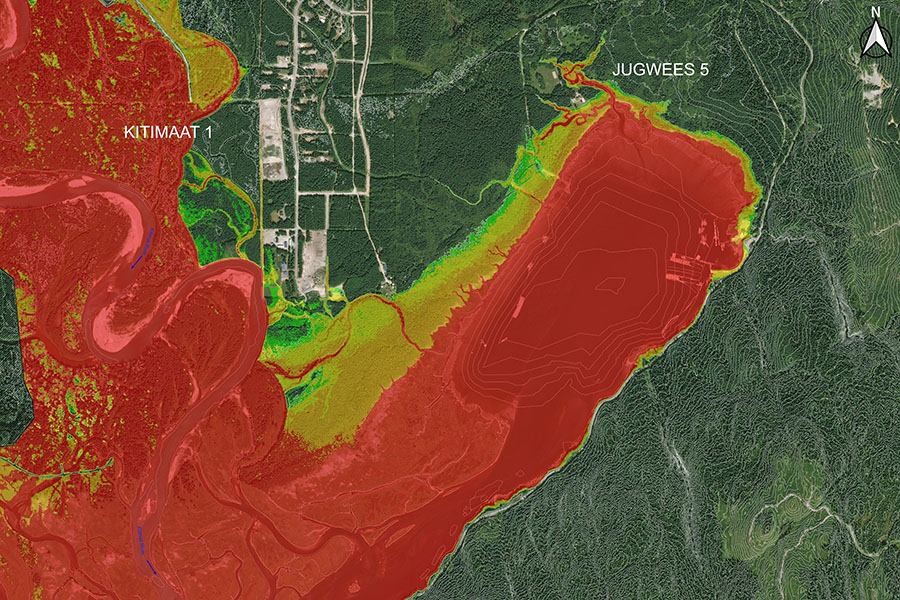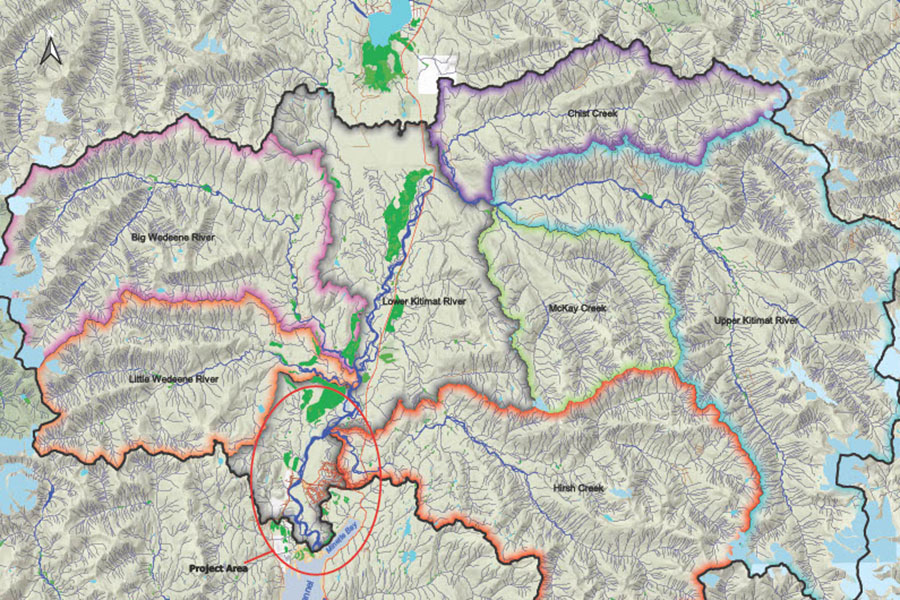Kitimat Flood Risk Mitigation Strategy
2020-2022 I Kitimat, BC
This project began as other flood mapping projects do: the existing flood maps were from 1982 and the District of Kitimat knew that they required an update. The 1982 maps did not communicate how the Kitimat River had changed over the last 40 years, and the community had suffered multiple flood events with media-worthy impacts.
Flood mapping projects can produce results that collect dust on a shelf. But when flood mapping is viewed as the first step in a community’s journey to sustainable flood risk management, the value of the project changes. When the District’s Request for Proposals for flood mapping came out, McElhanney saw an opportunity: the District could further their flood risk management strategy in several ways within a single project.
McElhanney recommended that the District redefine their scope to include a flood risk assessment and risk mitigation option review. This new scope would be twofold: it would produce insightful mapping and generate real-world risk mitigation options.
If ever there was an approach that would ensure against dust collection, this was it.
This project was managed by McElhanney team members local to Kitimat: not only did they know how the river reacted under different conditions, but they also understood the impacts of flooding on the community and its critical infrastructure. Our local knowledge informed the flood mapping process and paved the way for a flood risk assessment and risk mitigation option review that was equitable to each project partner.
McElhanney produced flood mapping for 20km of the Kitimat River and the upper reaches of the Douglas Channel around Minette Bay. Flood mapping began with an information collection and review process, including a bathymetric survey of the Kitimat River and Minette Bay and Digital Terrain Model compilation. During the subsequent analysis and modelling phase, we developed a fluvial hydraulic model, as the consequence of high tide levels combined with high river levels required specific evaluation. We also produced flood inundation maps and flood hazard maps based on the resulting data.
Next, our team of water resources and engineering professionals moved onto the flood risk assessment. We reviewed historical flooding and considered flood hazard impacts across five categories from Canada’s National Disaster Mitigation Program. We identified priority hazards that required the application of risk mitigation. With the risk assessment complete, we produced a third and final set of flood maps, this time addressing risk. These flood risk maps laid the foundation for the risk mitigation options process.
Determining risk mitigation options was a two-stage process, beginning with option recommendation and review, followed by preferred option identification. We hosted seven District departments at a mitigation options workshop and evaluated option recommendations against a 10-factor matrix.
Finally, we delivered two versions of final reporting covering the three map types, risk assessment, and mitigation option review: one for technical consideration and one for public engagement.
Today, two of the District’s risk mitigation options are underway. First, a flood awareness campaign was launched, featuring tools such as infographics, an FAQ webpage, and public open house events. Second, planning support began with a specialized report, and will continue into bylaw and zoning review and amendment recommendations.
The journey to sustainable flood risk management does not involve a single project. Instead, it calls for a staged plan that identifies needs and responds to them in a strategic and thoughtful way. The Kitimat Flood Risk Management Strategy is a community and consultant collaboration model that turns mapping and data analysis into real-world strategies spanning structural and non-structural solutions.
Here’s what the District of Kitimat had to say about our involvement: “Over past projects, McElhanney has demonstrated the ability to use their local knowledge and presence in our community to approach projects in insightful ways. By recommending that we expand the scope of this project beyond flood mapping, McElhanney again demonstrated a community-wide vision.”
This project earned a 2023 Award of Excellence in Soft Engineering from the Association of Consulting Engineering Companies BC




